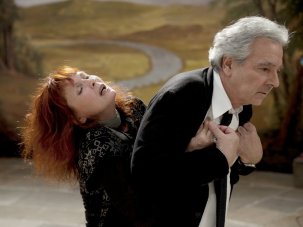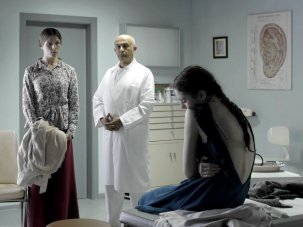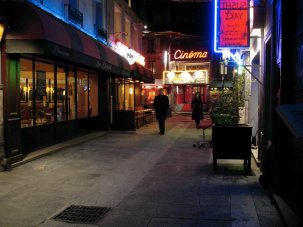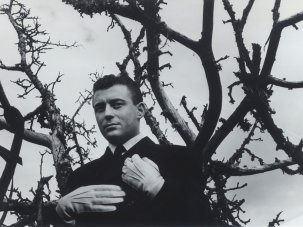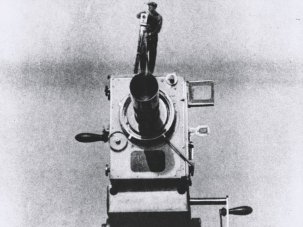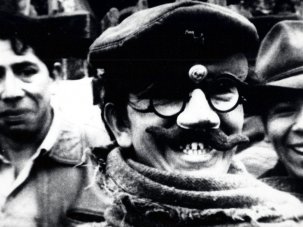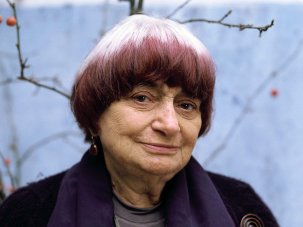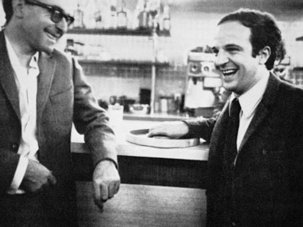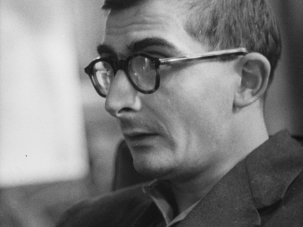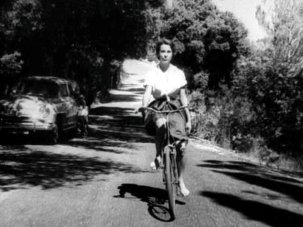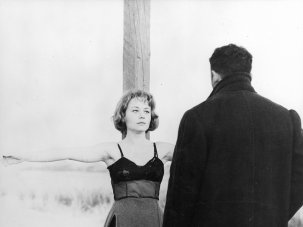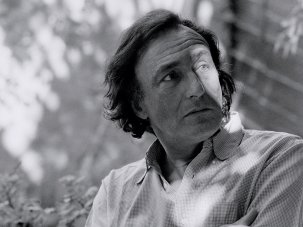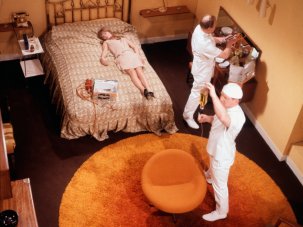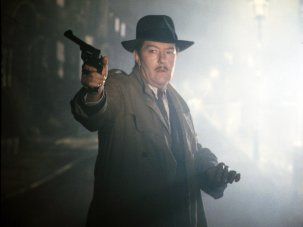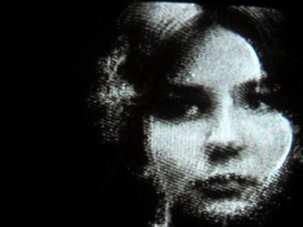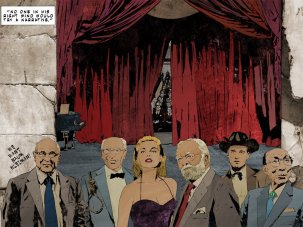Web exclusive
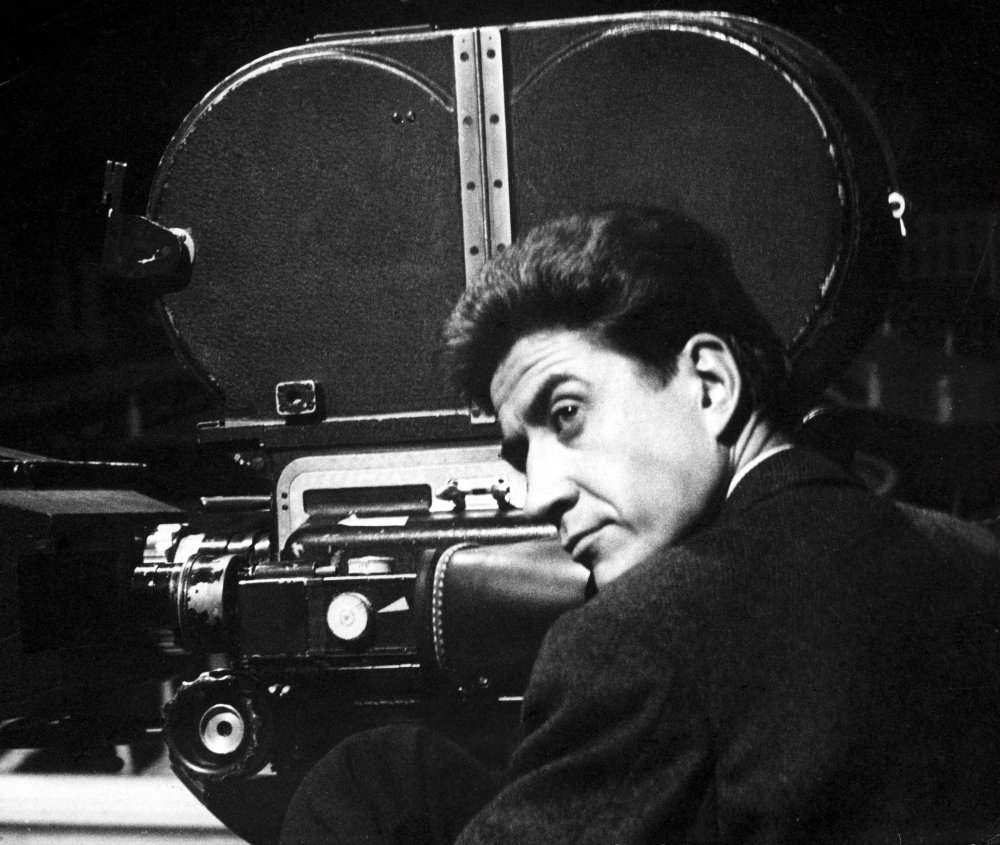
Alain Resnais
In the widespread acceptance of the auteur theory of filmmaking – that the director is the figure whose preoccupations and style rule everything else – Alain Resnais posed a conundrum. While his films seemed unified by a very sophisticated personality possessed with great technical refinement, he never created a screenplay himself, but sought out distinguished writers with their own strong identities, apparently changing very little of what they delivered. But whatever the source material, Resnais’ films were always supremely cinematic in their belief that reality and the imaginary might co-exist just as much as time present and time past.
Resnais had the good fortune to begin his feature film career with two hugely influential and controversial masterpieces. Hiroshima mon amour (1959), from a screenplay by Marguerite Duras, presented the horrors of the atomic bomb through the experiences of a French actress making a film in Japan. An affair with a Japanese man brings on associations with her teenage romance with a young German officer during the French Occupation. Resnais’ elliptical editing gradually introduced flashes of the past into the present until the woman’s guilty memory is fully revealed – a technique now practically taken for granted in cinema, but then still arresting.
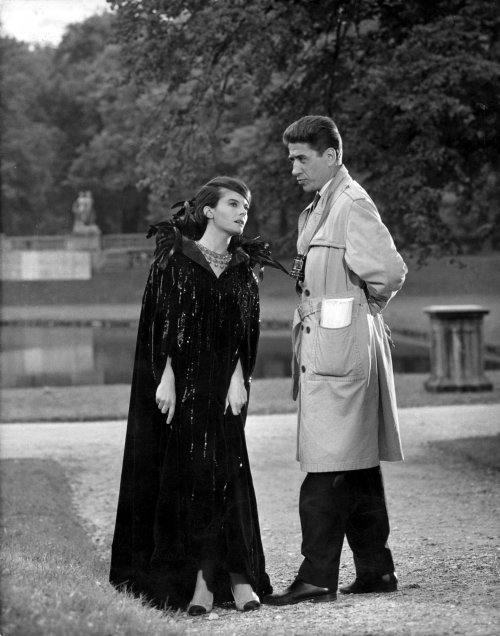
Resnais with Delphine Seyrig on the set of Last Year in Marienbad (1961)
His second feature, Last Year in Marienbad (1961) went much further. Based on a script by nouveau roman writer Alain Robbe-Grillet, the film jettisoned conventional psychological signposts for a seductive melange of scenes of an amorous intrigue that may or may not have happened, all to the backdrop of elegant high-society figures gathering at labyrinthine chateaux. Combining velvety black and white cinemascope with long tracking shots down endless corridors replete with mirrors, and playing on the soundtrack with highly formalised music and enigmatic voice-overs, Resnais challenged the audience to think afresh of exactly how a film should be viewed.
Nothing that followed in Resnais’ career was truly as radical as Marienbad, but it set the tone for a cinema intellectualism that was sneered at as much as it was embraced. In the UK, seeing the film was represented as the height of social pretension in a famous episode of Steptoe and Son, while Nicolas Roeg (whose own slippery, time-travelling films clearly owe a debt to Resnais) recalls how people thought the director simply had no idea about continuity.
What followed explored a more political terrain. Muriel (1963) made oblique reference to the recent Algerian War, while La Guerre est finie (1966) looked at the fading shadow of the Spanish Civil War, and both were concerned again with the distortions of memory and the disparity between clock time and psychological time.
But Resnais was of a generation who effectively abandoned dreams of revolution before May 1968, and from that year on his films became more playful and idiosyncratic. Above all he liked to work with forms and conventions, and famously said that “if there is no form, you cannot create emotion in the spectator.”
Gallery: Alain Resnais’ films
-
Night and Fog (Nuit et brouillard, 1955)
-
Toute la mémoire du monde (1956)
-
Hiroshima mon amour (1959)
-
Hiroshima mon amour (1959)
-
Last Year at Marienbad (L’Année dernière à Marienbad, 1961)
-
Last Year at Marienbad (L’Année dernière à Marienbad, 1961)
-
Last Year at Marienbad (L’Année dernière à Marienbad, 1961)
-
Last Year at Marienbad (L’Année dernière à Marienbad, 1961)
-
Last Year at Marienbad (L’Année dernière à Marienbad, 1961)
-
Muriel (Muriel ou Le Temps d'un retour, 1965)
-
La Guerre est finie (1966)
-
Far from Vietnam (Loin du Viêt-nam, 1967)
-
Je t’aime je t’aime (1968)
-
Je t’aime je t’aime (1968)
-
Stavisky… (1974)
-
Providence (1977)
-
Providence (1977)
-
Providence (1977)
-
Providence (1977)
-
My American Uncle (Mon oncle d’Amerique, 1980)
-
My American Uncle (Mon oncle d’Amerique, 1980)
-
My American Uncle (Mon oncle d’Amerique, 1980)
-
My American Uncle (Mon oncle d’Amerique, 1980)
-
Life is a Bed of Roses (La Vie est un roman, 1983)
-
Life is a Bed of Roses (La Vie est un roman, 1983)
-
L’Amour à mort (1984)
-
Mélo (1996)
-
On connaît la chanson (1997)
-
Pas sur la Bouche (2003)
-
Pas sur la Bouche (2003)
-
Wild Grass (Les Herbes folles, 2008)
-
You Ain’t Seen Nothin’ Yet (2012)
-
Life of Riley (Aimer, Boire et Chanter, 2014)
Resnais was born in 1922 in Brittany, and as a sickly, only child he became immersed in literature, comic books and films, making his own with an 8mm camera from the age of 12. Abandoning dreams of being an actor, after the war he became a skilled film editor and graduated to making documentary shorts, at first on Van Gogh, Gaugin and Picasso. On Les Statues meurent aussi (1953), about African art, he collaborated with Chris Marker, and together they would be associated with a ‘Left Bank’ group of filmmakers and writers in Paris years before the nouvelle vague was launched.
Resnais came to prominence with Night and Fog (1955), the first notable documentary to be made about the Nazi concentration camps, using archive footage combined with colour scenes shot amongst the ruins. Made when this footage was still largely unseen for fear of lowering post-war morale, this eloquently narrated film questioned how the memory of such events could be altered and eroded with time and changing testimonies. It was a commission to make a similar documentary on Hiroshima that led Resnais to the conception of his first feature.
Nothing was predictable in the subjects of Resnais’ films. Je t’aime, je t’aime (1968) was ostensibly science fiction, Stavisky… (1974) a period movie based on a real scandal. For Providence (1977), David Mercer gave him a script in which a sick writer concocts a bizarre imaginary narrative using his closest friends as his characters. Freed from any pretence of naturalism, Resnais juxtaposed surreal episodes with everyday life in My American Uncle (1980).
Gallery: Alain Resnais
-
Directing Ellen Burstyn in Providence (1977)
-
Directing John Gielgud in Providence (1977)
-
Directing Nicole Garcia in My American Uncle (1980)
-
Directing Pas sur la Bouche (2003)
-
Directing Sabine Azéma and Pierre Arditi in You Ain’t Seen Nothin’ Yet (2012)
-
Alain Resnais
As he became older, so the director – who adored the theatre, pulp fiction and American musicals – proved to be more surprising and irreverent in his choices, as well as overtly Anglophile. He paid homage to Dennis Potter with probably his greatest commercial success, On connaît la chanson (1997), in which the actors would mime snatches of popular French songs while staying in character. He made witty film versions of plays by Alan Ayckbourn, such as Smoking/No Smoking (1993) and Private Fears in Public Places (2006).
He even married his second wife and regular muse, Sabine Azéma, in Scarborough, where he had often attended Ayckbourn premieres before meeting the writer himself. And it was a film of an Ayckbourn play, Life of Riley, presented at the Berlin Film Festival this year, and warmly received by critics, which would close his extraordinary career at the age of 91.




